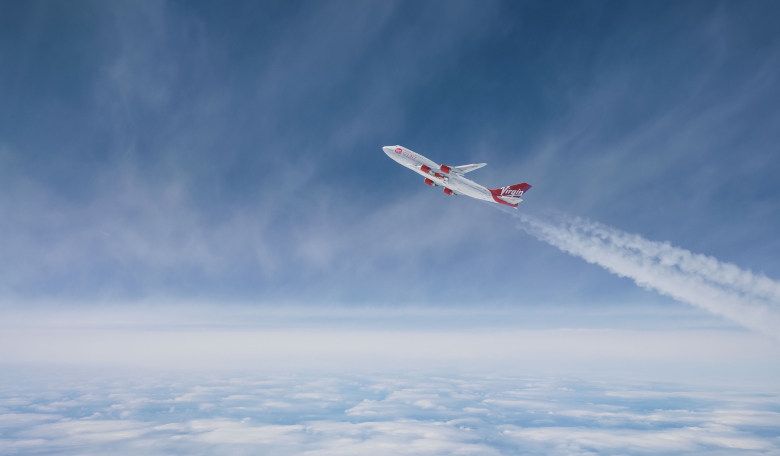After completing a successful captive carry flight of its liquid-fuelled air-launched rocket at the weekend over the Pacific Ocean, Virgin Orbit is now ready for its first-ever launch.
The test, which was the culmination of five years hard work and heralded the last major step prior to the company’s launch demo, involved the company’s Cosmic Girl – the Boeing 747-400 aircraft that is used as the launch platform – and a fully loaded LauncherOne, lift off from the main runway at the Mojave Air and Space Port on Sunday (April 12).
“This test will be a complete, end-to-end launch rehearsal that exercises all of our ground operations; our mission control; all of our communications systems and protocols; all of our range assets; and our carrier aircraft’s takeoff, flyout, pull-up maneuver, and return-to-base operations,” said representatives of the company on their website.
Virgin orbit has conducted several captive carry tests in the past, however for those tests, the LauncherOne rocket's propellant tanks were full of water.
This scenario is great for testing how the craft will cope with balance and weight onboard, but its not a true reflection of the final set-up as compared to the real rocket fuel, water is quite warm - more than 185°C (300°F) warmer.
For the final development test carried out on Sunday, the tanks were filled with liquid nitrogen; a compound very similar to that which will be carried on operational flights - super cold liquid oxygen.
Founded by Richard Branson, Virgin Orbit is a branch of the billionaire’s Virgin Group of companies, which also includes the Virgin Galactic space tourism firm.
Its main focus is the deployment of satellites. Unlike ‘traditional’ rockets which blast off vertically from a launch pad, satellites are deployed from the companies LauncherOne rocket, which is strapped under the wing of the modified 747 jet.
Once in position at around 10,700 metres (35,000 feet), LauncherOne is released and fired into space where it can deliver up to 330 kilograms (660 pounds) of payload into a variety of destinations in low-Earth orbit.
On a real flight, LauncherOne is released during the pull-up manoeuvre, but Sunday’s demonstration was about the fuel therefore the rocket remained firmly attached under the 747’s left wing before it returned to Mojave for inspections; a performance that by all accounts ticked every necessary box.
"That's a wrap on today's rehearsal, the final major test before our upcoming launch demo. We'll have more updates very soon — thanks for following along today!" Virgin Orbit wrote on Twitter after the test flight.
Like many firms around the globe right now, Virgin Orbit have had to contend with the limitations imposed upon them by the Covid-19 pandemic.
“We’ve made major changes to our plans, our work spaces, our procedures, and our schedules in order to keep our teammates safe and to help flatten the curve.
“We reconfigured our Mission Control. We re-wrote procedures for our technicians on the shop floor and at the test site in order to meet social distancing requirements. We were already accustomed to using Personal Protective Equipment during many of our operations — but now we are ramping up our standards to match the latest guidelines from the CDC and other leading medical experts,” says the Virgin Orbit website.
A date for the actual launch demo has yet to be released as the team are currently pouring over the data from this captive carry flight. With about half of all rockets failing on their first launch attempt, the team will run through a few last rehearsals to minimise the risk, but say Virgin Orbit, the Launch Demo is “squarely in our sights.”











